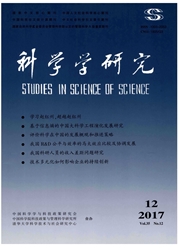

 中文摘要:
中文摘要:
基于2000-2009年间的省际面板数据,首先运用基尼系数、σ收敛和β收敛方法对中国区域产学研合作活跃度的空间分布特征及变动趋势进行客观描述,然后采用多元阶层回归方法,从区域社会资本、技术能力和经济环境等角度分析区域产学研合作活跃度的影响因素.实证研究结果表明,中国产学研合作活跃度存在空间分布的集聚特征,东部产学研合作比较活跃,中部次之,西部不太活跃;从变动趋势来看,全国和东西部地区产学研合作活跃度的非均衡性总体呈发散趋势,中部则存在收敛效应.回归分析结果显示,产学研合作活跃度的空间分布特征和变动趋势受区域社会资本(信任、规范和社会网络)、技术能力(R&D存量和R&D人员数量)和经济环境(高技术产业规模和出口经济规模)以及企业所有权性质等因素的影响.
 英文摘要:
英文摘要:
Based on Provincial Panel Data between 2000 and 2009,this article first applies the Gini coefficient,σ convergence and β convergence approach to objectively describe the spatial distribution characteristics and change trends of regional university-industry cooperation activity in China,and then takes use of the hierarchical multiple regression method to analyze the influencing factors of regional university-industry cooperation activity from the view of regional social capital,technical capacity and economic environment.The empirical results show that in our country university-industry cooperation activity features agglomeration in spatial distribution:cooperation is relatively active in the eastern regions less active in the central region,and relatively inactive in the western region.From the trend of changes,the non-equilibrium of university-industry cooperation activity shows divergent trends in the whole nation,eastern regions and western regions,whereas it shows convergent trends in the central region.This spatial distribution characteristics and change trends are affected by regional social capital (trust,norms and social networks),technical capability (R&D stock and R&D personnel number),the economic environment (high-tech industrial scale and export economies of scale) and the ownership of firms.
 同期刊论文项目
同期刊论文项目
 同项目期刊论文
同项目期刊论文
 期刊信息
期刊信息
